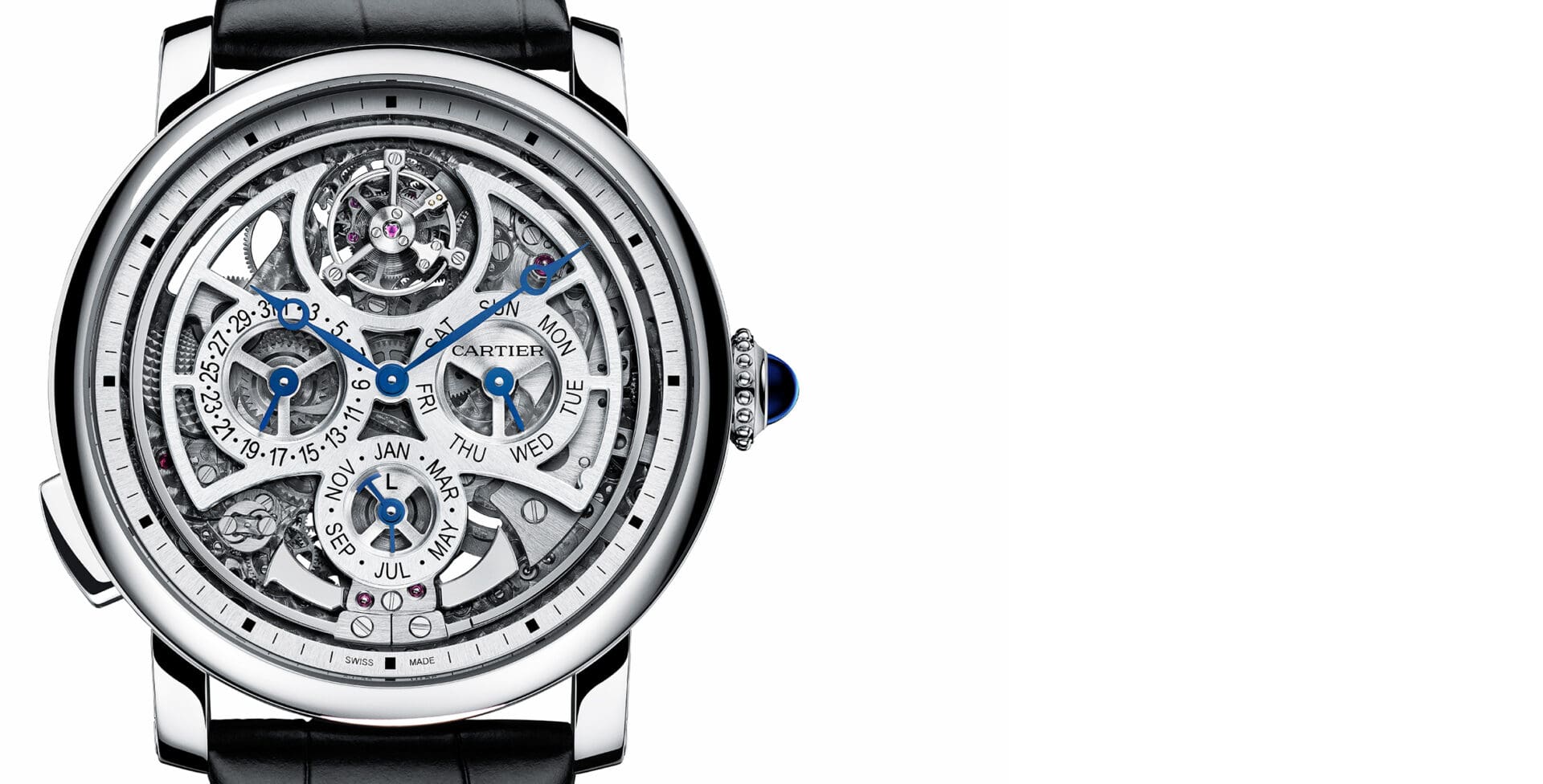INTRODUCING: The Cartier Rotonde de Cartier Grande Complication
Felix ScholzThe story in a second:
Cartier has over 100 years of watchmaking history behind them, so why have they decided to produce their most complicated piece ever in 2015?

Aside from the immediate impact of what is obviously a highly technical piece of horology, this watch is impressive because of what it represents; The Grande Complication is the most complicated watch Cartier have ever produced. However the really interesting thing about this watch doesn’t have anything to do with the number of parts or the movement design, but rather why Cartier made it at all.

Grande Complication is a loosely defined horological term for a watch that features at least three complications, incorporating:
– Timing
– Astronomical complications
– Striking complications
For a maison to produce a GP is a statement of horological expertise, in much the same way as being able to claim that your watch is produced entirely in-house. In the case of the Cartier the complications being showcased are a minute repeater, a perpetual calendar (which doesn’t need to be adjusted for the next 100 or so years) and a flying tourbillon.

But the front is a different story. Finished in Cartier’s now trademark masculine skeletonised finish, the dial is very cut back, with striking ‘wings’ framing the calendar subdials and tourbillon cage. At the bottom of the dial the minute repeater mechanism (which is activated by a pusher at 8, rather than the more traditional slide) is on full display. This movement, which, for all its complexity, remains readable, is housed in a 45mm platinum case. So it’s slim but still has hefty wrist presence. There’s a lot to see on this watch, and the skeletonisation really shows off Cartier’s technique to the fullest – which is the point. Why make (or for that matter buy) such a complicated watch if you’re going to hide all the cool stuff behind a dial?
Finished in Cartier’s now trademark masculine skeletonised finish, the dial is very cut back, with striking ‘wings’ framing the calendar subdials and tourbillon cage.
Which brings us back to the main point. Why did Cartier choose to make this watch now?
It’s all well and good to have 100 years of iconic watches and technological innovations behind you. History is full of such horological innovators, but very, very few of them are still around today. Cartier is ensuring that their watchmaking innovations don’t get relegated to history, and remain relevant in the upper echelons of progressive maisons. They’ve done this largely under the leadership of Carole Forestier-Kasapi, their head of movement creation, who has continually pushed the horological envelope, overhauling and vastly expanding Cartier’s catalogue of movements and significantly investing in R&D. Combine this with the fact that Cartier ranks in the top five when it comes to global revenue and it doesn’t take a genius to see that Cartier’s watch collection is going places, both at a high and accessible level.
In this context the Cartier Grande Complication is akin to the brand running their colours up the mast, telling the world that they are capable of more than just high volume Tanks and Ballon Bleu models. By developing a Grande Complication of this complexity and distinct character Cartier are putting themselves at the same table as the most esteemed trend-leaders in high-horology. Round of applause, please.
Specifications
Brand
Cartier
Model
Rotonde de Cartier Grande Complication Skeleton
Reference No
W1556251
Case Size
45mm
Case Height
12.6mm
Case Material
Platinum
Dial
Skeletonised
Strap
Black alligator skin strap, double adjustable folding buckle in 18-carat white gold
Movement
Manufacture self-winding mechanical movement, calibre 9406 MC certified “Poinçon de Geneve”
Crystal
Sapphire
Functions
Minute repeater, flying tourbillon and perpetual calendar complications
Availability
Limited to 50 pieces





